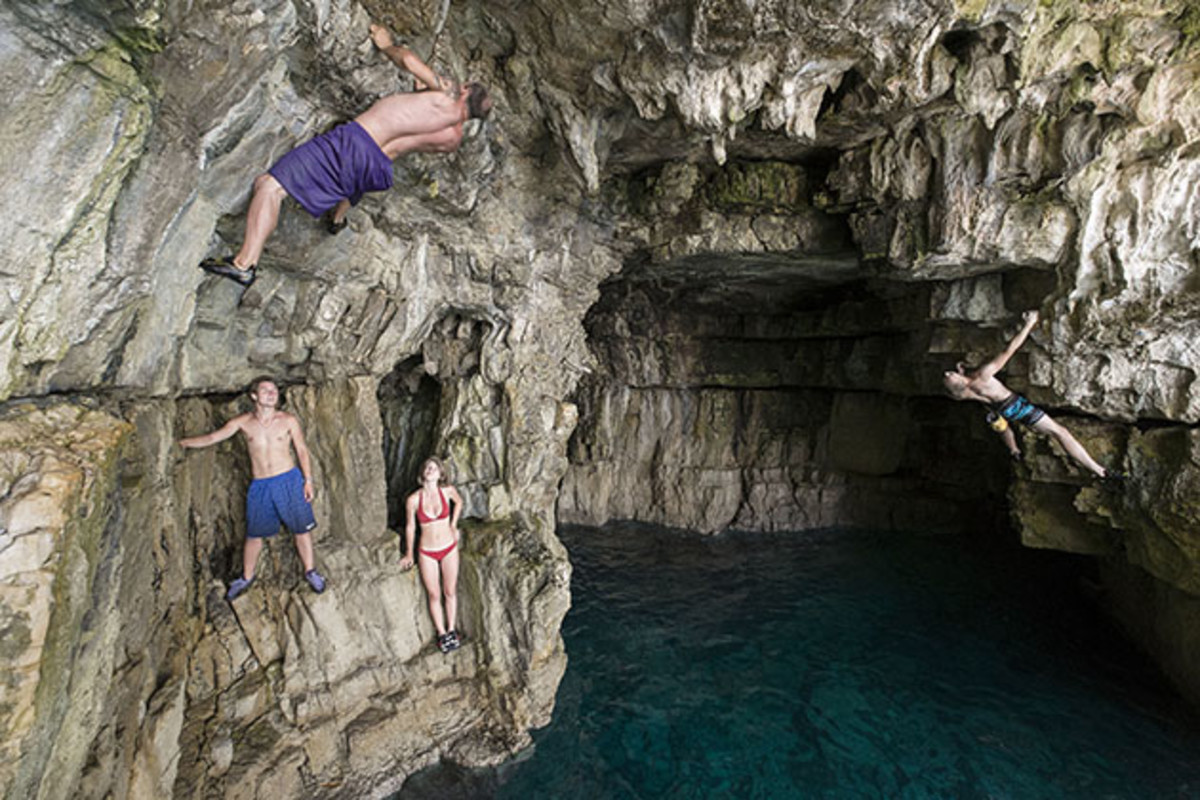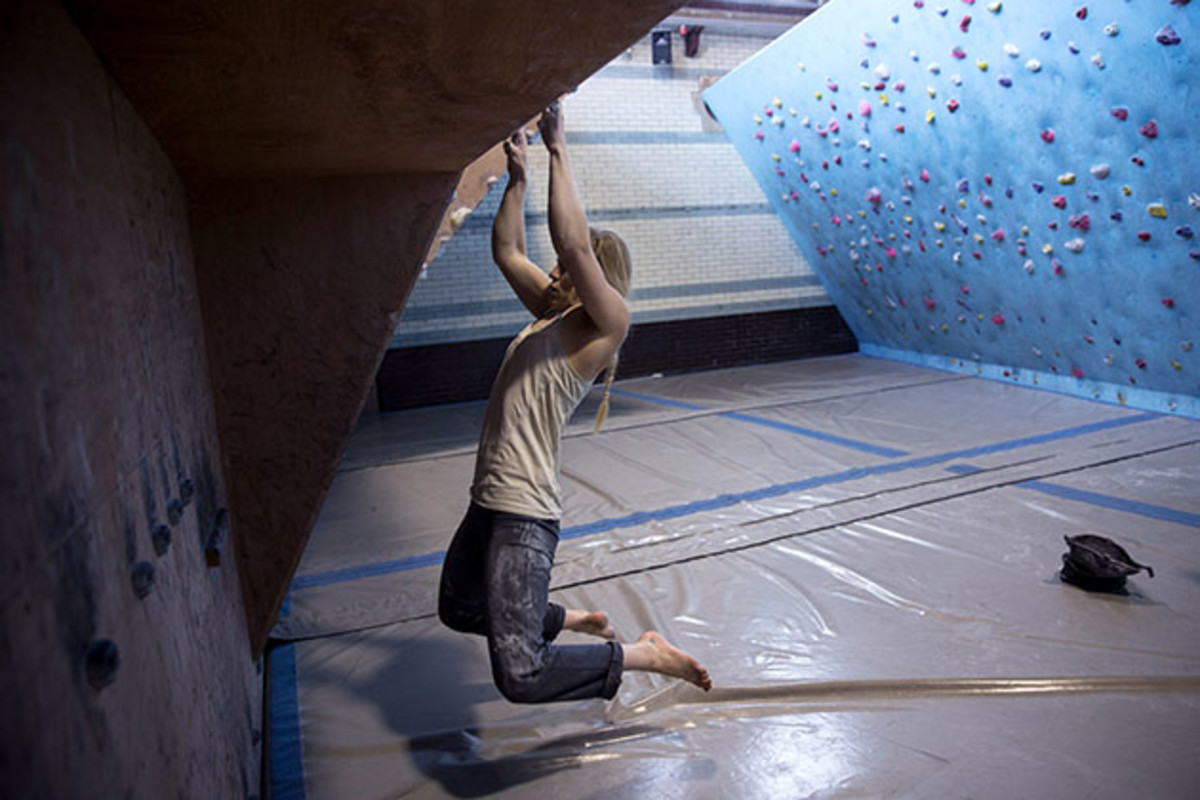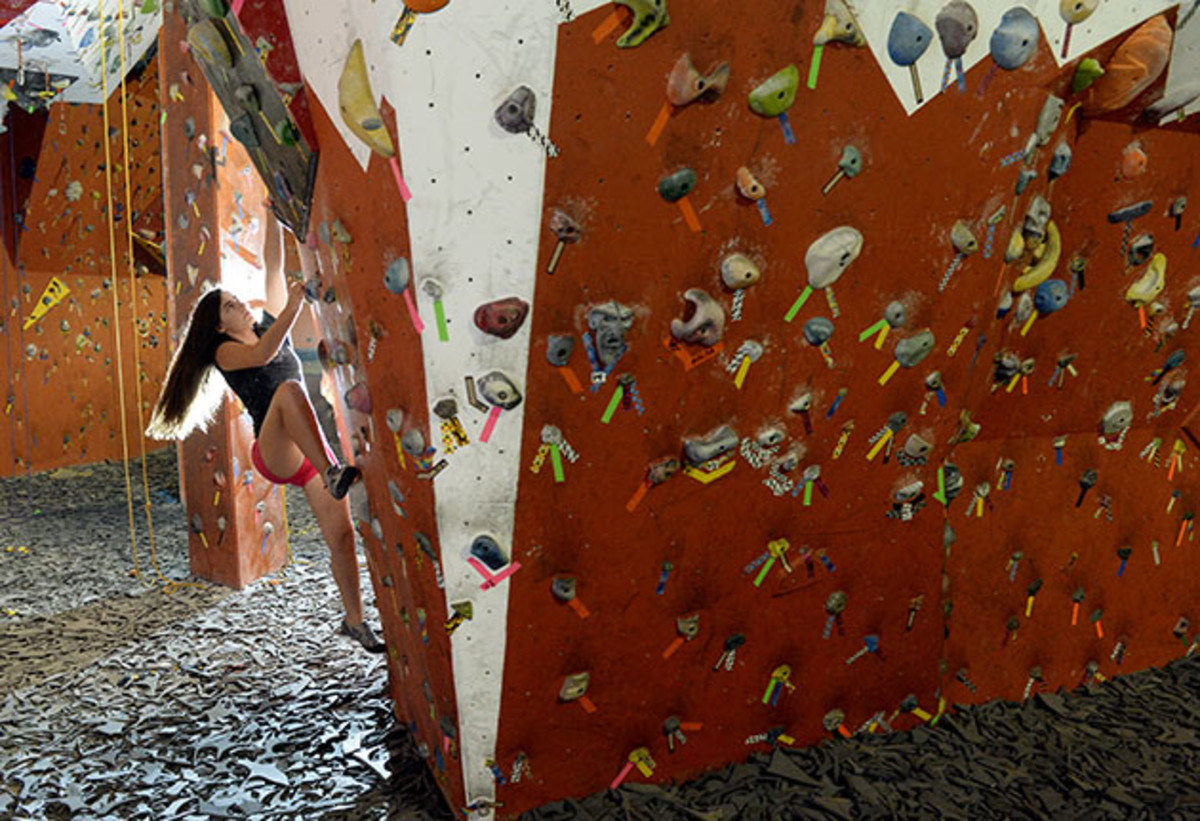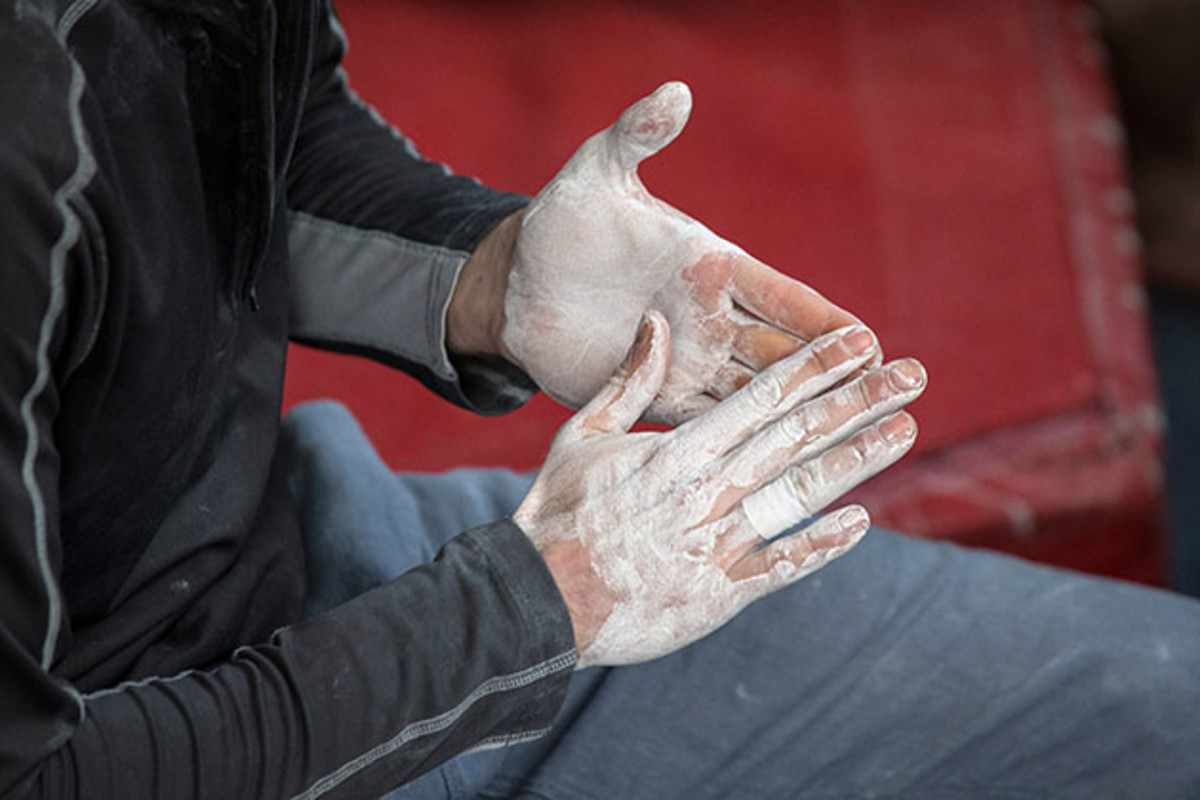Summertime Sweat: Get a rock-hard body with this bouldering workout

Rock climbing used to be about getting as high off of the ground as possible. It required ropes, harnesses and carabineers, and mid-climb breaks—or even missed holds—were optional. After all, you would always just hang from your harness for a few minutes before giving the wall another go.
But by scaling things down in the height department, bouldering doesn’t just make climbing more accessible to the masses, it takes climbing’s intensity to a new level.
• Ultra-runner Scott Jurek's interval training tips for the everyday athlete
Simply put, bouldering is climbing, albeit shorter walls, without the help of a rope or harness. Most walls max out at about 15 feet, but professionals commonly push the limits to 50 feet or more—still, with no ropes. A crash pad sits on the ground, ready to catch climbers if and when they fall.
“Bouldering, to me, is about being free,” says Paul Robinson, Team CLIF Bar athlete. “In bouldering, it all comes down to you and the rock.”

Unparalleled Fitness, Uncharted Territory
The fastest growing form of rock climbing around, bouldering has long been a way for professional climbers to develop the physical strength necessary in their sport, according to USA Climbing.
“Bouldering is the most powerful and gymnastic form of climbing that exists,” Robinson says. “All of the difficulty of a boulder is condensed into a few short movements that separate you from the top of the wall.”

Those movements are not just short. They are quick, powerful, and often contorting. They require—and build—extreme strength. Bouldering is a high-intensity exercise that, while strengthening all of the major muscles of the body, does overtime on your back, shoulders, arms, and core, says Kate Mullen, owner of The Stronghold Climbing Gym in Los Angeles. Meanwhile, it also hones balance, body awareness, and mental grit. In bouldering, routes are even called “problems” that climbers have to “solve” to make to the top.
• Trail running is the workout your summer is missing
“To me making a first ascent of a boulder is the most incredible feeling. Knowing that no one has ever climbed something before makes the experience of figuring it or and climbing it that much more intriguing,” Robinson says. “One of my hardest first ascents I have ever done was a 50-foot boulder in California that remains one of the hardest boulders in the world, Lucid Dreaming V15. The boulder has the majority of its difficulty in the first 20 feet of climbing, however, the mental challenge and crux is at the top.”
Getting Off The Ground

While the search of first ascents (being the first person to summit a particular boulder, or solve a problem) takes athletes like Robinson across the world from Southern Africa to Siberia, “first ascents” for newbies are best performed in controlled areas—either climbing gyms or, if outside, with a spotter who has experience in bouldering, says Georges Karam, owner of bouldering-only gym Chicago Bouldering Collective.
And start small. The next time you’re on a hike, look for climbing opportunities. Even the boulders in Central Park are fair game. After all, the shorter the boulder, the better. It doesn’t matter if a route only has you three feet off of the ground, he says. As long as you are on that boulder, you are doing it. You are building the strength and skills to up the ante when you’re ready to.
• Kitesurfing is the new way to ride waves to a fitter body
“Note that there are inherent risks in bouldering. Bouldering may seem safer than climbing because great heights are not involved, but every fall is a ‘ground fall,’ and injuries such as broken ankles and sprained wrists are not uncommon,” Mullen says. It’s possible to discover bouldering problems in your local wilderness areas. However, before you start climbing, you need to make a careful assessment of the overall rock strength, the strength of any holds that you will be putting your weight on, and whether the landing zone has any hazards that could cause injury in case you take a fall.”

As far as prerequisites for bouldering go, all you need to start scaling walls is a chalk bag (hands can get sweaty and slippery), a foam crash pad for safety’s sake, and, if you so choose, climbing shoes, Karam says. Bouldering shoes are designed with small soles and fit the feet snuggly to eliminate instability on the rocks, he explains.
• The ultimate guide to the perfect squat, with or without weights
If you doubt if your muscular strength qualifies as “gravity defying,” build a foundation with bodyweight exercises including pull-ups (start with assisted ones if you need to), push-ups and plank variations, Mullen says. And then, once you get on the rocks, you’ll really feel the body benefits.
